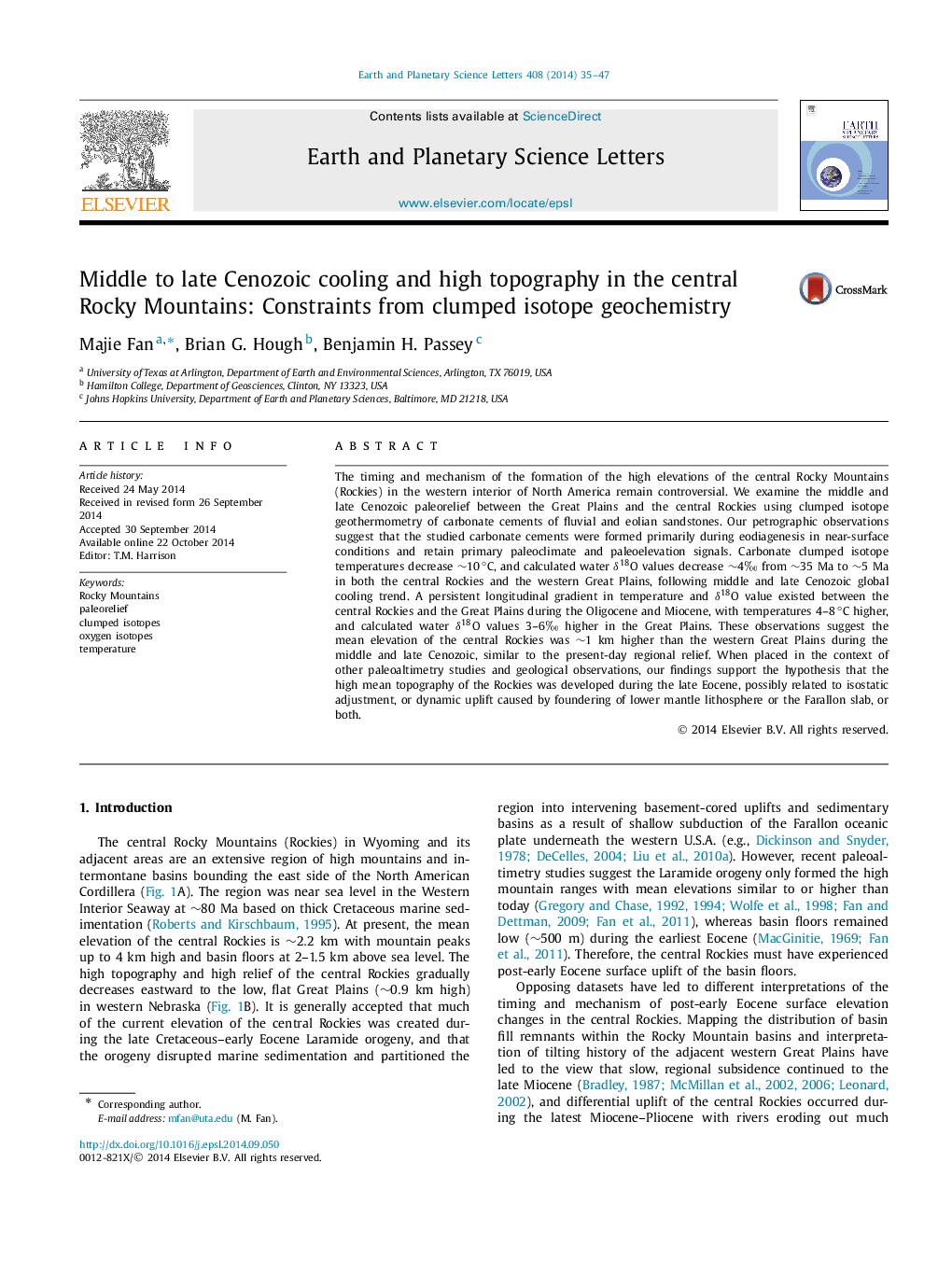| کد مقاله | کد نشریه | سال انتشار | مقاله انگلیسی | نسخه تمام متن |
|---|---|---|---|---|
| 6428671 | 1634748 | 2014 | 13 صفحه PDF | دانلود رایگان |

- Middle-late Cenozoic sandstone carbonate cements were mainly formed by eodiagenesis.
- Isotope compositions retain near-surface climate and topographic information.
- T(Î47) decreased â¼10°C and δOwater18 values decreased â¼4â° from â¼35Ma to â¼5Ma.
- Eastward increase of T(Î47) of 4-6â°C and δOwater18 values of 3-6â°.
- High mean elevation of the central Rockies may be established during late Eocene.
The timing and mechanism of the formation of the high elevations of the central Rocky Mountains (Rockies) in the western interior of North America remain controversial. We examine the middle and late Cenozoic paleorelief between the Great Plains and the central Rockies using clumped isotope geothermometry of carbonate cements of fluvial and eolian sandstones. Our petrographic observations suggest that the studied carbonate cements were formed primarily during eodiagenesis in near-surface conditions and retain primary paleoclimate and paleoelevation signals. Carbonate clumped isotope temperatures decrease â¼10°C, and calculated water δO18 values decrease â¼4â° from â¼35Ma to â¼5Ma in both the central Rockies and the western Great Plains, following middle and late Cenozoic global cooling trend. A persistent longitudinal gradient in temperature and δO18 value existed between the central Rockies and the Great Plains during the Oligocene and Miocene, with temperatures 4-8â°C higher, and calculated water δO18 values 3-6â° higher in the Great Plains. These observations suggest the mean elevation of the central Rockies was â¼1km higher than the western Great Plains during the middle and late Cenozoic, similar to the present-day regional relief. When placed in the context of other paleoaltimetry studies and geological observations, our findings support the hypothesis that the high mean topography of the Rockies was developed during the late Eocene, possibly related to isostatic adjustment, or dynamic uplift caused by foundering of lower mantle lithosphere or the Farallon slab, or both.
Journal: Earth and Planetary Science Letters - Volume 408, 15 December 2014, Pages 35-47